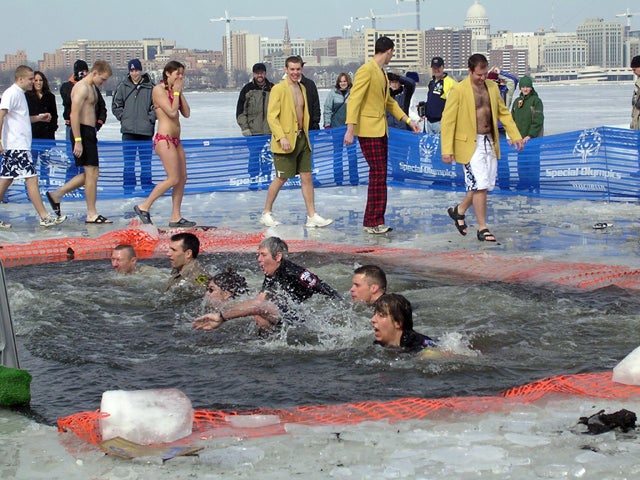Sure, athletes often tout ice baths as the way to speedy recovery, but actually jumping—and submerging oneself—into icy cold water just doesn’t sound particularly pleasant, or safe, for that matter. Yet every winter thousands of folks all across the country voluntarily partake in . Why? “The reasons are as varied as the Plungers,” explains Jason Schriml of , which hosts the 10,000-person in the Chesapeake Bay every January. “Some of the more common things we hear are: It’s on a person’s bucket list, people’s friends or relatives convince them, it’s a great cause to support, it breaks up the winter blahs, and it was a dare.”
OK, fair enough. But most Polar Plunge locations average 30-some degrees. Are they safe? Really?
Plunging into frigid water does have some risks, says , professor at the University of Manitoba and author of . When a plunger is suddenly submerged in cold water, the “cold shock” response occurs: gasping followed by hypocapnia, the inability to breath-hold, hypertension, and increased cardiac output. “All of which can cause sudden death either immediately or within a matter of minutes after immersion in susceptible individuals,” Giesbrecht told the crowd at the 2003 Winter Wilderness Medicine Conference.
So what does that mean? “We do not encourage anyone with medical conditions, such as heart issues, to participate,” Schriml says. “If someone is uncertain, they should consult a doctor before participating.” Schriml, however, has participated in 26 plunges without consequences. “There is shock, but it did not prevent me from breathing,” he says, encouraging plungers to enter the water gradually—from a beach or shore—rather than driving in from a dock.
The second response to cold water immersion is cold incapacitation, during which blood vessels near the skin constrict—a defense mechanism, if you will—to prevent heat loss. “This effect is especially significant in the hands where blood circulation is negligible, leading to finger stiffness, poor coordination of gross and fine motor activity, and loss of power,” says Giesbrecht, noting that CI begins after five to 10 minutes. Blood rushes from appendages to the core. As a result, limbs are weak and motor coordination might be impaired. “The loss of motor control makes it difficult, if not impossible, to execute survival procedures such as grasping a rescue line.”
Ideally, you’ll be out of the water before this occurs (plunges only last a minute or two), but, just in case, most organized polar plunges have you covered. “We have medical and public safety personnel on site at all times,” says Holly Claytor, director of public relations for , which hosts a polar plunge in the Atlantic Ocean in February. “These highly trained individuals consider air and water temperature, current strengths, the amount of debris in the water and other surf conditions to determine both the maximum time plungers are allowed to stay in the water as well as how far out plungers can go.”
Lastly, remember that there are no concrete rules about how to plunge. This is a fundraiser, folks, so whether you go all the way under or just dip your toes in the water, you’re still supporting a good cause (Special Olympics Maryland raises about $2.5 million per year through its plunge). Be smart, stay safe, and have fun.


